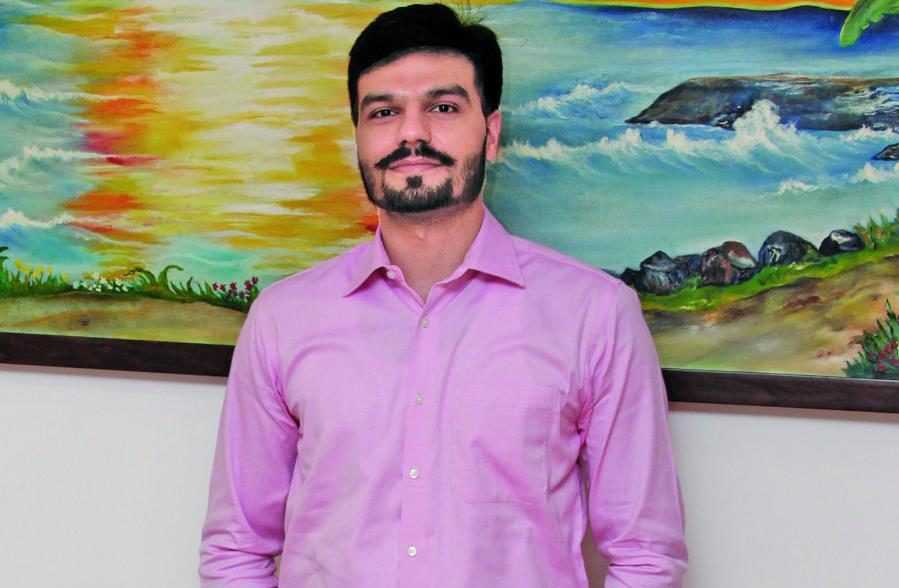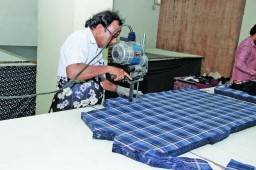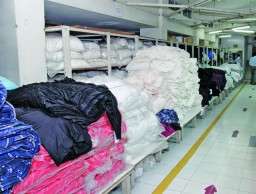
Given India’s maturity as an apparel sourcing destination, the showroom of an Indian apparel exporter has evolved to become a showcase of capabilities in design and manufacturing. The assortment of cuts, silhouettes, textures, washes, finishes and the product range is an accurate and timely reflection of global trends. Needless to say, Indian exporters are mastering the art of designing and they are designing to impress. However, to partner with the buyer as an active design-input force, is a demanding task in itself because the manufacturer needs to build an arsenal of value addition capacities, a team capable of deciphering the buyers’ demands and manufacturing the end-product in the given lead time as per the pre-defined quality standards while minimizing the operating overheads to maintain the profitability. In an exclusive interaction with StitchWorld, Gaurav Dev Chaudhary, CEO, Fashion Flare International, one such Delhi-based exporter who has a dynamic design-focused setup, puts forth his case for working in such a complex business model.


With an impressive showroom lined with an array of high-fashion sequined and ruffled women’s blouses and dresses, Fashion Flare International boasts of sending new designs every two weeks to its buyers, developed by the company’s collaborations with design houses in London and Montreal. Adopting the success strategy, banking on being fashion forward in product development, Gaurav states, “It goes without saying that if the designs are trendy, fashion forward, and we are also able to produce quality, then the buyer would like to come to me time and again. So we can afford to charge a reasonable premium for the product.” Having a grasp over women’s wear, Fashion Flare is catering majorly to the European buyers such as LC Waikiki, DeFacto, Joe Brown, Fox Clothing, Topshop, BHS, JD Williams and Forever 21. “We have always served our buyers through on-time delivery and quality, besides product development,” avers Gaurav, who joined the company three years ago and steered it to develop its PD capabilities. The company has also brought down its Minimum Order Quantity (MOQ) levels from 5,000 pieces to accept order quantities as small as 800 pieces. To complement the move, the FOBs registered by Fashion Flare went up by 15 per cent.
However, serving the international buyers through product development guarantees business not profitability, a fact well understood by Gaurav, who channelized his energies towards reducing the operating overheads of his manufacturing facility in Okhla. The first task was to reduce his sewing capacities by 20 per cent, as a result, the company houses 200 sewing machines now. “Instead of massive capacities that go idle, it is always better to have a few units but work on maximum efficiencies. It is an expensive affair for a Delhi factory to be idle. This is also where I see most of our competitors going wrong. They have huge capacities and in the lean season they are all lying vacant because of which they lose all the margins earned during the business period,” reasons Gaurav. To hedge the risk presented by the lean season, the company has also started working with domestic brands such as Gini&Jony, Pantaloons and a host of online retailers. According to Gaurav, “The domestic market is now on its way to shedding the notorious image of small volumes and payments that are never realized.”
IT Interventions for Profitability
The sewing lines at Fashion Flare work on progressive productivity is calculated. “Operation productivity is in direct relation with the number of defects (if any) in an hour for each operator, for every operation,” Gaurav avers.
To further maintain the quality of output offered by the factory, a module called ‘LEAD Technology’ has been developed – something which Gaurav imbibed from one of his visits to a Turkish factory. The module was developed by Leelajay Technologies, an IT firm belonging to Fashion Flare’s parent group. “The name LEAD was given because it helps us identify the best team of operators to lead a particular style/product,” Gaurav shares. “For instance, we have 18 operators working on a particular product, we will then document which operator is producing the maximum and the minimum defects. This is synced with the skill matrix and the system helps us determine the suitable person for that job,” explains Gaurav. The data captured by the module includes defects incurred, number of defect-less pieces produced in an hour, etc. to generate reports such as number of defects per piece, number of defects per operator, number of defects per operation, etc. “All these numbers help us in analyzing whether our operator is efficient or not, whether our line plan is effective or not, whether our operation bulletin is workable or not and what is the maximum efficiency achievable, given the skills and resources of the operators and supervisors,” Gaurav adds. The data is manually fed by floor supervisors on their computers/systems.
The LEAD module plays a host to other functions as well, ranging from analyzing and judging the operator’s efficiency to awarding incentives. The CEO adds, “Every operator has a record file (according to LEAD system) and every 2-3 months it is reviewed by the Production HOD and an efficient operator is duly rewarded,” states Gaurav.
The same module has been implemented in the sampling room as well.
Such IT interventions have been made in the preproduction, production planning, and execution stage as well. A Master TNA has been developed, to be reviewed and tracked by the top management, and it does not record microtasks. Instead, it focuses on recording major critical events like PCD and dates when the inventory moves from one department to the other. Similarly, every department designs its own TNA for tracking each of its micro-activity. Explaining the significance, Gaurav says, “This makes the job lighter and more efficient for HODs and their teams. Both the TNAs are synced and followed on the APPS system. As a part of the top management, we follow the Master TNA and then there is a weekly update meeting with the HODs who do it almost on daily basis with their teams. To be honest, these are cumbersome jobs, going through the same order over and over again and nothing in particular is happening with that order in that week, but eventually it ensures us timely deliveries.”
Backed with a robust ITdriven setup, Fashion Flare is geared up to register 15-20 per cent growth, and cross the US $ 10 million mark for its turnover this year.

Post a Comment